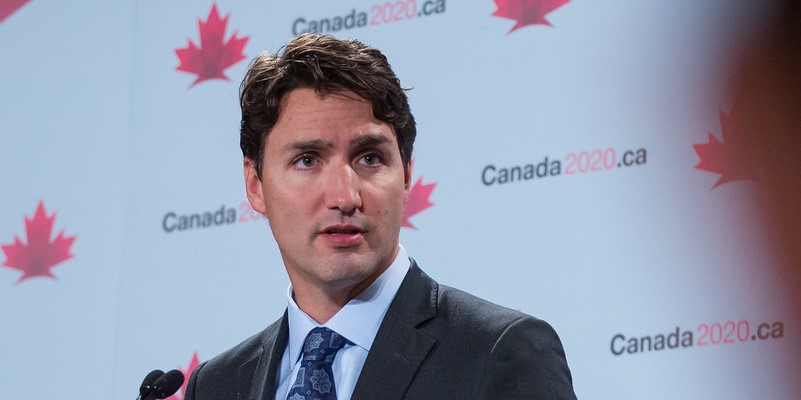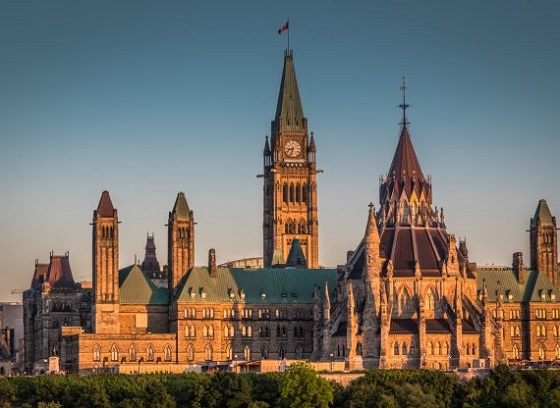Uncategorized
Death toll rises to 22 as tornadoes, severe storms hit South

BEAUREGARD, Ala. — A tornado roared into southeast Alabama and killed at least 22 people and injured several others Sunday, part of a severe storm system that caused catastrophic damage and unleashed other tornadoes around the Southeast.
“We are at 22 right now. Unfortunately, I feel like that number may rise yet again,” Lee County Sheriff Jay Jones said of the death toll.
Drones flying overheard equipped with heat-seeking devices had scanned the area for survivors but the dangerous conditions halted the search late Sunday, Jones said. An intense ground search would resume Monday morning.
Jones said the twister travelled straight down a key local artery in Beauregard and that the path of damage and destruction appeared at least a half mile wide. He said single-family homes and mobile homes were destroyed, adding some homes were reduced to slabs. He had told reporters earlier that several people were taken to hospitals, some with “very serious injuries.”
Lee County Coroner Bill Harris told The Associated Press that he had to call in help from the state, because there were more bodies than his four-person office can handle.
The National Weather Service confirmed late Sunday a tornado with at least an F3 rating and a track at least half a mile (.8 kilometres) wide caused the deadly destruction in Alabama.
Dozens of emergency responders rushed to join search and rescue efforts in hard-hit Lee County after what forecasters said they think was a large tornado touched down Sunday afternoon, unleashed by a powerful storm system that also slashed its way across parts of Georgia, South Carolina and Florida.
Radar and video evidence showed what looked like a large tornado crossing the area near Beauregard shortly after 2 p.m. Sunday, said meteorologist Meredith Wyatt with the Birmingham office of the National Weather Service.
“It appears it stayed on the ground for at least a mile and maybe longer,” Jones told the AP.
After nightfall Sunday, the rain had stopped and pieces of metal debris and tree branches littered roadways in Beauregard. Two sheriff’s vehicles blocked reporters and others from reaching the worst-hit area. Power appeared to be out in many places.
President Donald Trump tweeted late Sunday, “To the great people of Alabama and surrounding areas: Please be careful and safe. … To the families and friends of the victims, and to the injured, God bless you all!”
Rita Smith, spokeswoman for the Lee County Emergency Management Agency, said about 150 first responders had quickly jumped in to efforts to search the debris after the storm struck in Beauregard. At least one trained canine could be seen with search crews as numerous ambulances and emergency vehicles, lights flashing, converged on the area.
No deaths had been reported Sunday evening from storm-damaged Alabama counties outside Lee County, said Gregory Robinson, spokesman for the Alabama Emergency Management Agency. But he said crews were still surveying damage in several counties in the southwestern part of the state.
Numerous tornado warnings were posted across parts of Alabama, Georgia, Florida and South Carolina on Sunday afternoon as the powerful storm system raced across the region. Weather officials said they confirmed other tornadoes around the region by radar alone and would send teams out early Monday to assess those and other storms.
In rural Talbotton, Georgia, about 80 miles (130 kilometres) south of Atlanta, a handful of people were injured by either powerful straight-line winds or a tornado that destroyed several mobile homes and damaged other buildings, said Leigh Ann Erenheim, director of the Talbot County Emergency Management Agency.
Televised broadcast news footage showed smashed buildings with rooftops blown away, cars overturned and debris everywhere. Trees all around had been snapped bare of branches.
“The last check I had was between six and eight injuries,” Erenheim said in a phone interview. “From what I understand it was minor injuries, though one fellow did say his leg might be broken.”
She said searches of damaged homes and structures had turned up no serious injuries or deaths there.
Henry Wilson of the Peach County Emergency Management Agency near Macon in central Georgia said a barn had been destroyed and trees and power poles had been snapped, leaving many in the area without power.
Authorities in southwest Georgia are searching door-to-door in darkened neighbourhoods after a possible tornado touched down in the rural city of Cairo, about 33 miles (53 kilometres) north of Tallahassee, Florida, on Sunday evening. There were no immediate reports of serious injuries.
Authorities said a tornado was confirmed by radar in the Florida Panhandle late Sunday afternoon. A portion of Interstate 10 on the Panhandle was blocked in one direction for a time in Walton County in the aftermath, said Don Harrigan, a meteorologist for the National Weather Service in Tallahassee.
“There’s a squall line moving through the area,” Harrigan told AP. “And when you have a mature line of storms moving into an area where low level winds are very strong, you tend to have tornadoes developing. It’s a favourable environment for tornados.”
The threat of severe weather continued into the late-night hours. A tornado watch was in effect for much of eastern Georgia, including Athens, Augusta and Savannah. The tornado watch also covered a large area of South Carolina, including the cities of Charleston and Columbia.
___
Associated Press writers Russ Bynum in Savannah, Georgia, Bill Cormier in Atlanta, and Ryan Kryska in New York contributed to this report.
Kim Chandler, The Associated Press
Alberta
Oil and gas in the global economy through 2050
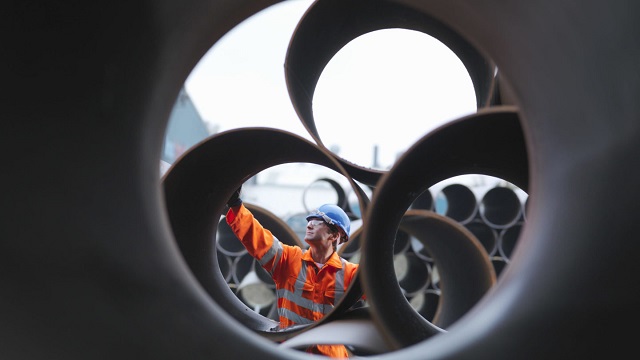
From the Canadian Energy Centre
The world will continue to rely on oil and gas for decades to come, according to the International Energy Agency
Recent global conflicts, which have been partly responsible for a global spike in energy prices, have cast their shadow on energy markets around the world. Added to this uncertainty is the ongoing debate among policymakers and public institutions in various jurisdictions about the role of traditional forms of energy in the global economy.
One widely quoted study influencing the debate is the International Energy Agency’s (IEA) World Energy Outlook, the most recent edition of which, World Energy Outlook 2023 (or WEO 2023), was released recently (IEA 2023).
In this CEC Fact Sheet, we examine projections for oil and natural gas production, demand, and investment drawn from the World Energy Outlook 2023 Extended Dataset, using the IEA’s modelled scenario STEPS, or the Stated Policies Scenario. The Extended Dataset provides more detailed data at the global, regional, and country level than that found in the main report.
The IEA’s World Energy Outlook and the various scenarios
Every year the IEA releases its annual energy outlook. The report looks at recent energy supply and demand, and projects the investment outlook for oil and gas over the next three decades. The World Energy Outlook makes use of a scenario approach to examine future energy trends. WEO 2023 models three scenarios: the Net Zero Emissions by 2050 Scenario (NZE), the Announced Pledges Scenario (APS), and the Stated Policies Scenario (STEPS).
STEPS appears to be the most plausible scenario because it is based on the world’s current trajectory, rather than the other scenarios set out in the WEO 2023, including the APS and the NZE. According to the IEA:
The Stated Policies Scenario is based on current policy settings and also considers the implications of industrial policies that support clean energy supply chains as well as measures related to energy and climate. (2023, p. 79; emphasis by author)
and
STEPS looks in detail at what [governments] are actually doing to reach their targets and objectives across the energy economy. Outcomes in the STEPS reflect a detailed sector-by-sector review of the policies and measures that are actually in place or that have been announced; aspirational energy or climate targets are not automatically assumed to be met. (2023, p. 92)
Key results
The key results of STEPS, drawn from the IEA’s Extended Dataset, indicate that the oil and gas industry is not going into decline over the next decade—neither worldwide generally, nor in Canada specifically. In fact, the demand for oil and gas in emerging and developing economies under STEPS will remain robust through 2050.
Oil and natural gas production projections under STEPS
World oil production is projected to increase from 94.8 million barrels per day (mb/d) in 2022 to 97.2 mb/d in 2035, before falling slightly to 94.5 mb/d in 2050 (see Figure 1).

Source: IEA (2023b)
Canadian overall crude oil production is projected to increase from 5.8 mb/d in 2022 to 6.5 mb/d in 2035, before falling to 5.6 mb/d in 2050 (see Figure 2).

Source: IEA (2023b)
Canadian oil sands production is expected to increase from 3.6 mb/d in 2022 to 3.8 mb/d in 2035, and maintain the same production level till 2050 (see Figure 3).

Source: IEA (2023b)
World natural gas production is anticipated to increase from 4,138 billion cubic metres (bcm) in 2022 to 4,173 bcm in 2050 (see Figure 4).

Source: IEA (2023b)
Canadian natural gas production is projected to decrease from 204 bcm in 2022 to 194 bcm in 2050 (see Figure 5).

Source: IEA (2023b)
Oil demand under STEPS
World demand for oil is projected to increase from 96.5 mb/d in 2022 to 97.4 mb/d by 2050 (see Tables 1A and 1B). Demand in Africa for oil is expected to increase from 4.0 mb/d in 2022 to 7.7 mb/d in 2050. Demand for oil in the Asia-Pacific is projected to increase from 32.9 mb/d in 2022 to 35.1 mb/d in 2050. Demand for oil from emerging and developing economies is anticipated to increase from 47.9 mb/d in 2022 to 59.3 mb/d in 2050.

Source: IEA (2023b)

Source: IEA (2023b)
Natural gas demand under STEPS
World demand for natural gas is expected to increase from 4,159 billion cubic metres (bcm) in 2022 to 4,179 bcm in 2050 (see Figures 6 and 7). Demand in Africa for natural gas is projected to increase from 170 bcm in 2020 to 277 bcm in 2050. Demand in the Asia-Pacific for natural gas is anticipated to increase from 900 bcm in 2020 to 1,119 bcm in 2050.

Source: IEA (2023b)

Source: IEA (2023b)
Cumulative oil and gas investment expected to be over $21 trillion
Taking into account projected global demand, between 2023 and 2050 the cumulative global oil and gas investment (upstream, midstream, and downstream) under STEPS is expected to reach nearly U.S.$21.1 trillion (in $2022). Global oil investment alone is expected to be over U.S.$13.1 trillion and natural gas investment is predicted to be over $8.0 trillion (see Figure 8).
Between 2023 and 2050, total oil and gas investment in North America (Canada, the U.S., and Mexico) is expected to be nearly U.S.$5.6 trillion, split between oil at over $3.8 trillion and gas at nearly $1.8 trillion (see Figure 8). Oil and gas investment in the Asia Pacific, over the same period, is estimated at nearly $3.3 trillion, split between oil at over $1.4 trillion and gas at over $1.9 trillion.

Source: IEA (2023b)
Conclusion
The sector-by-sector measures that governments worldwide have put in place and the specific policy initiatives that support clean energy policy, i.e., the Stated Policies Scenario (STEPS), both show oil and gas continuing to play a major role in the global economy through 2050. Key data points on production and demand drawn from the IEA’s WEO 2023 Extended Dataset confirm this trend.
Positioning Canada as a secure and reliable oil and gas supplier can and must be part of the medium- to long-term solution to meeting the oil and gas demands of the U.S., Europe, Asia and other regions as part of a concerted move supporting energy security.
The need for stable energy, which is something that oil and natural gas provide, is critical to a global economy whose population is set to grow by another 2 billion people by 2050. Along with the increasing population comes rising incomes, and with them comes a heightened demand for oil and natural gas, particularly in many emerging and developing economies in Africa, the Asia-Pacific, and Latin America, where countries are seeing urbanization and industrialization grow rapidly.
References (as of February 11, 2024)
International Energy Agency (IEA), 2023(a), World Energy Outlook 2023 <http://tinyurl.com/4nv9xyfj>; International Energy Agency (IEA), 2023(b), World Energy Outlook 2023 Extended Dataset <http://tinyurl.com/3222553b>.
Uncategorized
Chrystia Freeland refuses to answer how much Trudeau government has collected via carbon tax
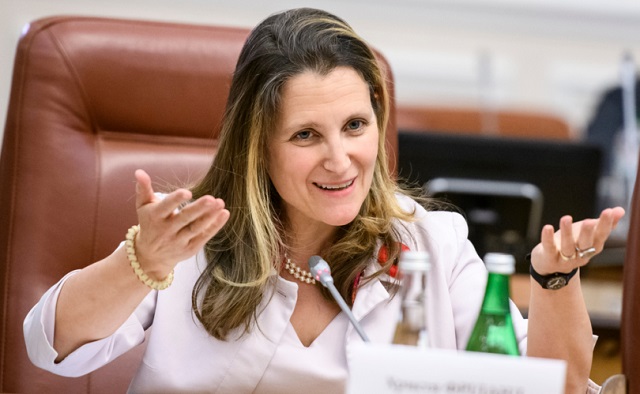
From LifeSiteNews
Deputy Prime Minister and Finance Minister Chrystia Freeland continues to claim that the revenue from the carbon tax ‘goes back to Canadians’ despite data showing otherwise.
Canadian Deputy Prime Minister and Finance Minister Chrystia Freeland has refused to reveal how much Liberals have collected via the unpopular carbon tax, which is set to go up again on April 1.
During a March 21 session in the House of Commons, Conservative Member of Parliament (MP) Marty Morantz questioned Freeland regarding how much the Liberal government has taken in through the carbon tax.
“How much has your government collected in carbon taxes?” Morantz asked.
Freeland responded by dodging the question, stating, “[This is] also an opportunity for me to point out that Manitoba families will be getting $1,200 this year.”
“Again, minister, if I could just have the number [of] how much you’ve collected in carbon taxes,” Morantz pressed.
Freeland again refused to answer, instead claiming that the “key point” is that the “price on pollution” is “revenue neutral.”
As Morantz persisted in his question, Freeland alleged that the revenue from the carbon tax is “all money that goes back to Canadians.”
However, this statement has been proven untrue as the Parliamentary Budget Officer recently revealed that the government rebates are insufficient to cover the rising costs of fuel under Trudeau’s carbon tax, causing many to wonder where their money is actually going.
According to records published in December, the carbon tax cost Canadians nearly $200 million in paperwork since Prime Minister Justin Trudeau introduced the fuel charge in 2019.
Trudeau’s carbon tax, framed as a way to reduce carbon emissions, has cost Canadian households hundreds of dollars annually despite rebates when factoring in the indirect costs associated with the measure.
The costs are only expected to rise, as a recent report revealed that a carbon tax of more than $350 per tonne is needed to reach Trudeau’s net-zero goals by 2050.
Currently, Canadians living in provinces under the federal carbon pricing scheme pay $65 per tonne, but the Trudeau government has a goal of $170 per tonne by 2030.
Additionally, Trudeau has refused to pause the carbon tax hike scheduled for April 1, despite seven out of ten provincial premiers and 70 percent of Canadians pleading with him to halt his plan.
Meanwhile, Trudeau and his cabinet continue to attend lavish retreats, with a recent Liberal retreat costing taxpayers nearly $500,000.
During a media interview following the nearly $500,000 retreat, Trudeau told Canadians struggling with the high cost of living that times are also difficult for politicians.
“Yeah, people are facing tough times, and yes, everyone is finding it difficult right now. And as leaders, MPs, parliamentarians of all types, part of our job is to be there to take it, to support it as Canadians are worried and anxious, and put out those solutions,” he said.
“So yeah, it’s not an easy time to be a politician,” Trudeau lamented.
-

 Economy8 hours ago
Economy8 hours agoExtreme Weather and Climate Change
-

 Jordan Peterson1 day ago
Jordan Peterson1 day agoJordan Peterson slams CBC for only interviewing pro-LGBT doctors about UK report on child ‘sex changes’
-

 Freedom Convoy1 day ago
Freedom Convoy1 day agoTrudeau’s use of Emergencies Act has cost taxpayers $73 million thus far
-

 COVID-192 days ago
COVID-192 days agoPro-freedom Canadian nurse gets two years probation for protesting COVID restrictions
-

 Economy2 days ago
Economy2 days agoMassive deficits send debt interest charges soaring
-
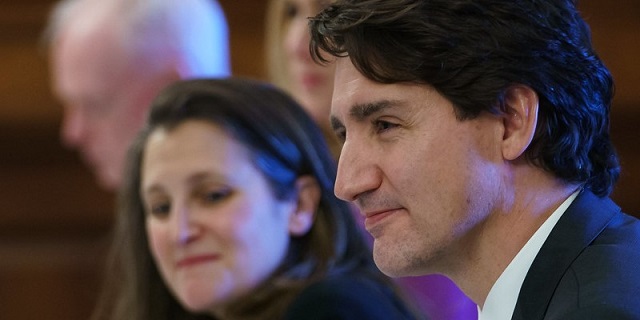
 Economy2 days ago
Economy2 days agoFederal budget’s scale of spending and debt reveal a government lacking self-control
-

 Business1 day ago
Business1 day agoBusiness investment key to addressing Canada’s productivity crisis
-

 Business1 day ago
Business1 day agoDoubling Down on Missing the Mark


